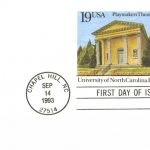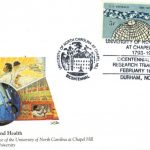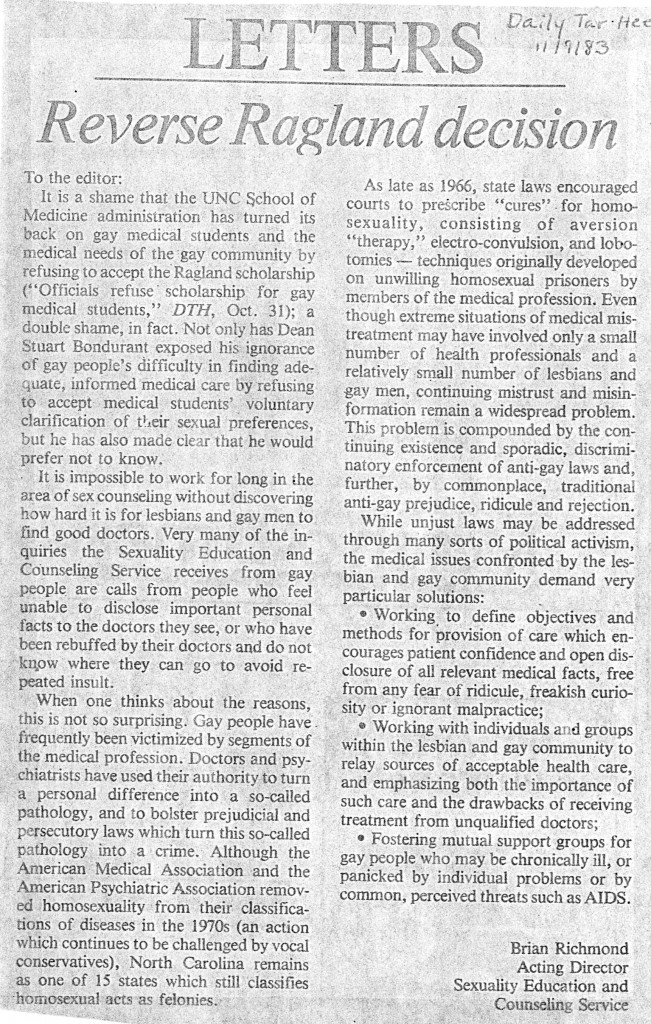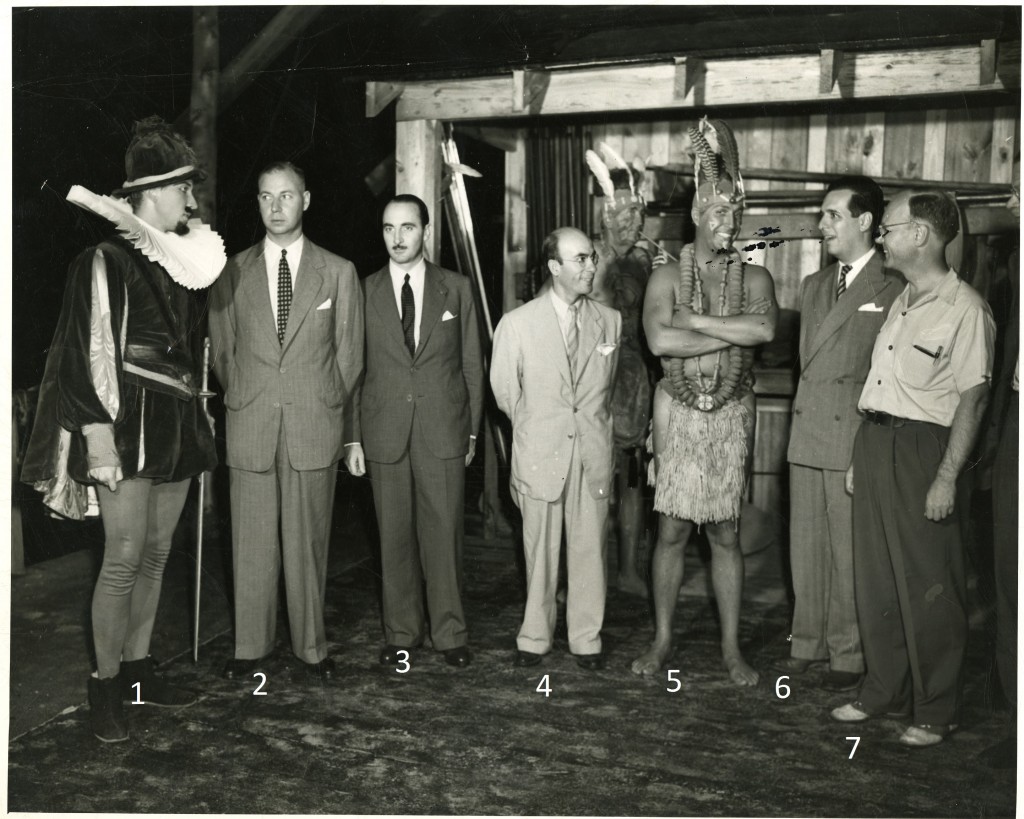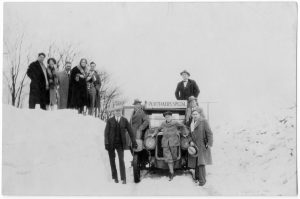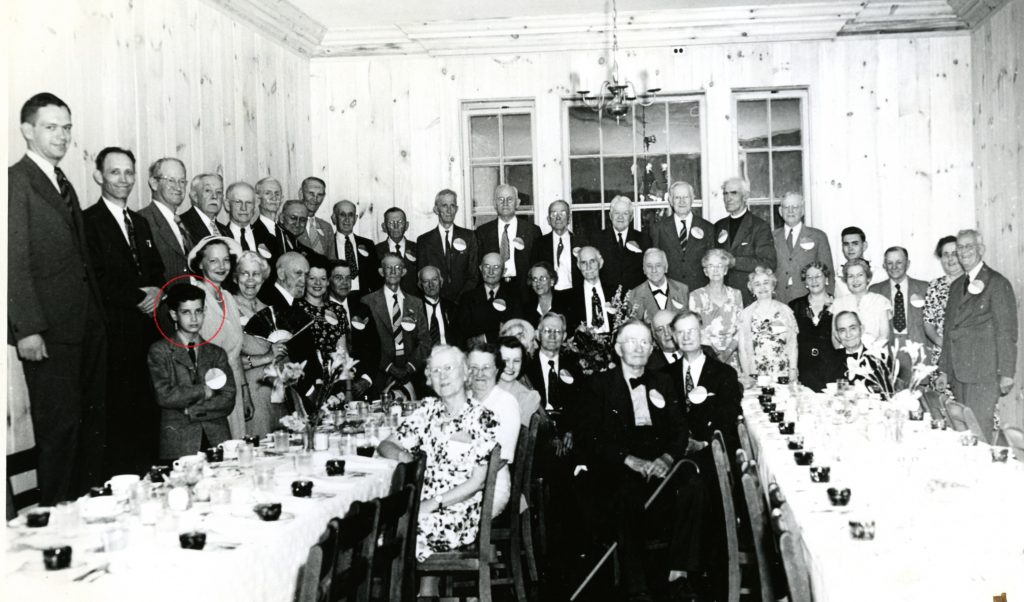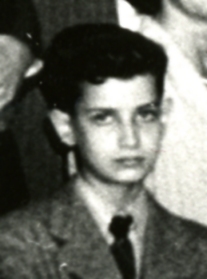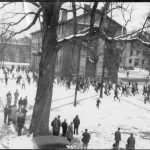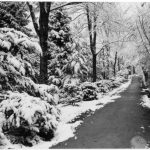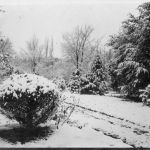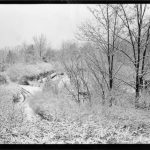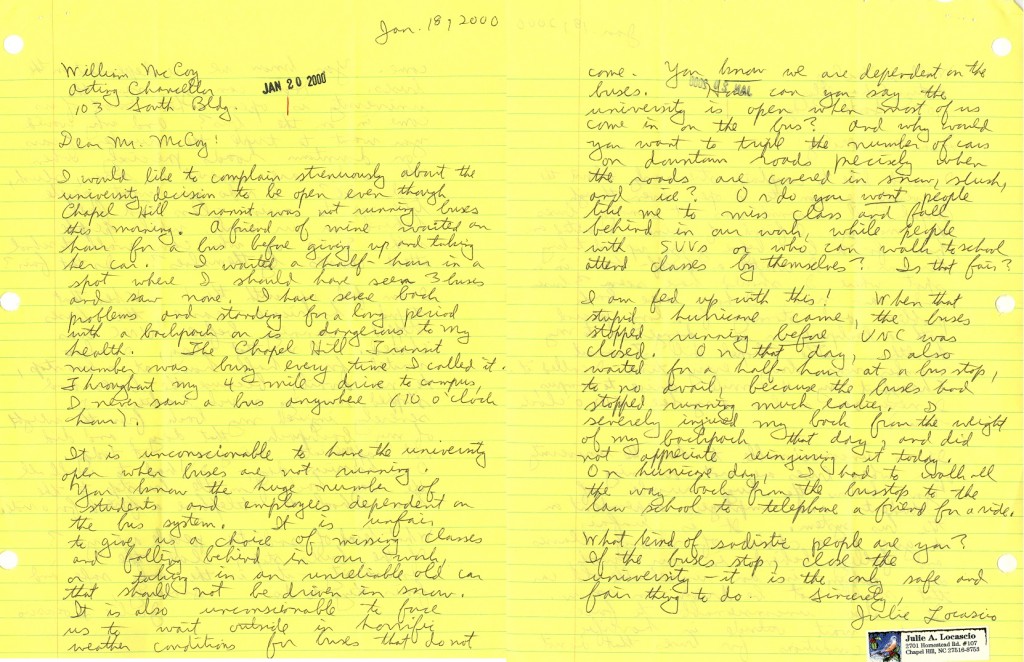[Update 2/15/2017: A 1904 article in the Daily Tar Heel reveals that the cartoons, drawn in the late 1870s, were made in reference to an incident on campus. Read more here.]
Recently, I came across an old hand-drawn cartoon in the University Papers (#40005) that depicts the struggle between physics and chemistry for scientific supremacy as both a train wreck and a cock fight. There’s nothing I can see to date the cartoon—though it’s probably later than 1830 (the earliest railways in the US) and certainly later than 1804 (the invention of the steam locomotive).
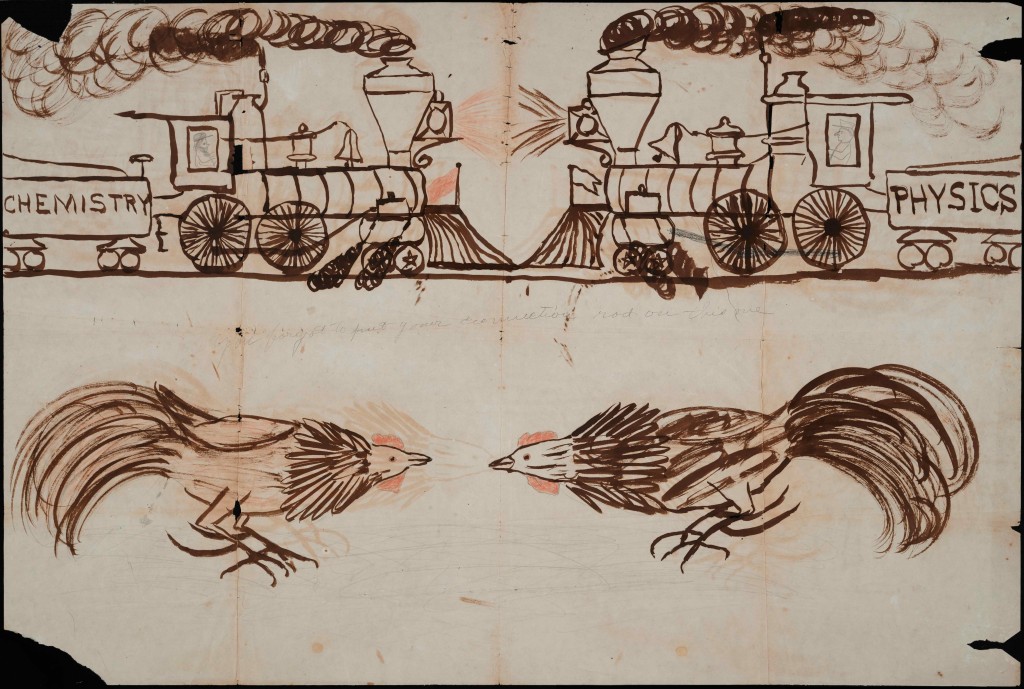
It’s hard to say if there’s any significance to the artist’s inclusion of light rays emanating from the headlamp of the train labeled “Physics.” This drawing appears to have been made prior to Einstein’s 1905 Gedankenexperiment involving light emitted from moving trains, but it certainly could have been made after 1865, when Maxwell discovered that light is an electromagnetic wave and therefore travels at a constant speed. It’s also difficult to interpret an intention behind leaving out the connecting rod on the “Physics” train (see where a second artist, or critic, has penciled in, “You forgot to put your connection rod on this one”), though that might have been mere lack of attention to detail on the part of the artist. Regardless, the game of chicken seems to have solved nothing, and second cartoon depicts the two train operators going head to head.
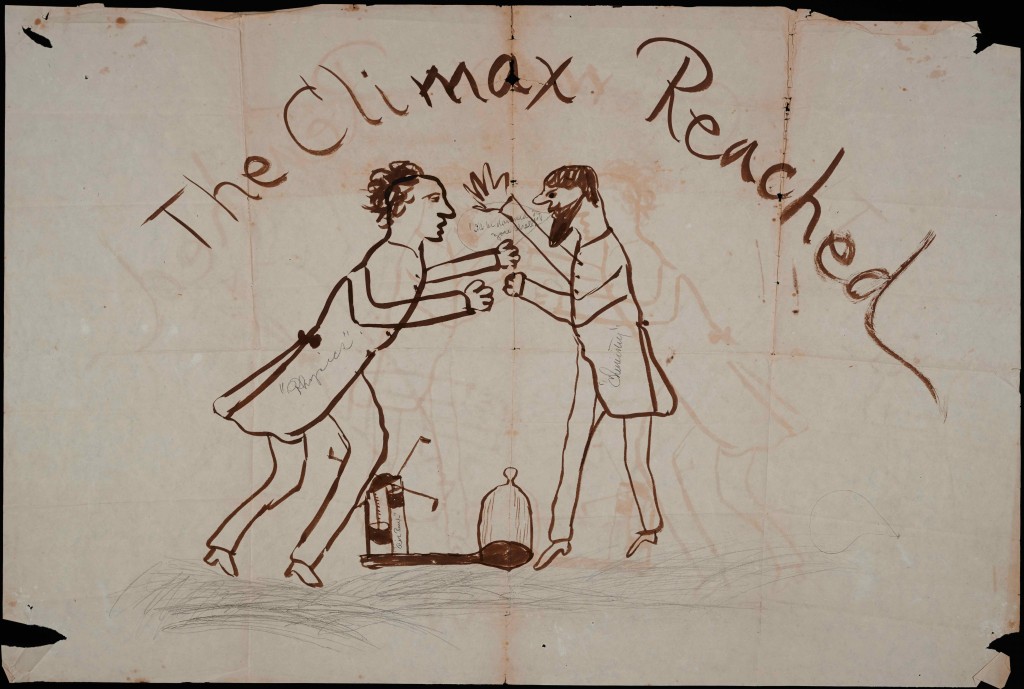
The same bepenciled critic—who has conscientiously labeled each opponent and the air pump and hastily scribbled a little grass to denote the field of combat—has place in a speech bubble hanging from the lips of “Chemistry” the repudiation, “I’ll be damned if you shall!” Such fierce animosity. Who will win?
Unfortunately, there is no third drawing illustrating the outcome of this heated confrontation. Some say it rages still, and the rumor is you can sometimes catch a glimpse of these two combatants-in-tails struggling with one other on the lofty walkways bridging Murray and Venable.
[OPF-40005/16 in the University of North Carolina Papers #40005, University Archives, Wilson Library, University of North Carolina at Chapel Hill.]

